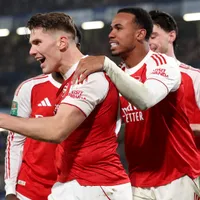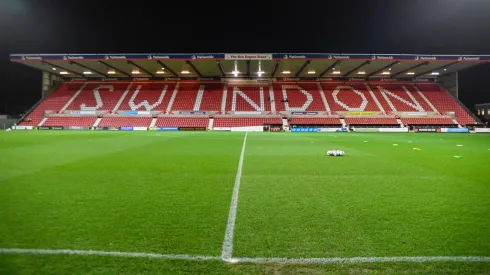World Soccer Talk writer Euan Walsh takes us on a journey to experience what life is like supporting a lower-league club in the United Kingdom. Walsh is a supporter of Swindon Town in the south of England. Swindon was previously in the Premier League but now finds itself in the fourth tier (League Two).
England’s Football League has a new exclusive broadcast deal exclusively in the United States with CBS Sports and Paramount+. It’s an unprecedented opportunity for American soccer fans to watch 147 Championship games per season. There are 20 from each of the bottom two tiers, League One and League Two.
Hollywood stars Ryan Reynolds and Rob McElhenney purchased Wrexham in November 2020. They captured the imagination of American audiences, who’ve since watched the Welsh club achieve back-to-back promotions and return to League One for the first time in 20 years.
But Wrexham’s story is more representative of Hollywood fantasy, something of a completely unprecedented anomaly within the lower reaches of English soccer, than the reality of supporting almost any of their League One or League Two counterparts.
Range of crowd sizes across EFL
Supporting a lower-league soccer club in England (and Wales, and indeed Scotland beyond the relentlessly well-oiled winning machines of Celtic and pre-2012 Rangers) is, in my opinion, defined by four things: authenticity, hope, heartbreak, and routine.
Soccer in the English lower leagues is authentic. Many clubs have a cultural identity in alignment with their local working-class communities, who continue to support them irrespective of their demise, mediocrity, or success. Clubs like Grimsby, whose 9,052-capacity stadium, Blundell Park, has the picturesque backdrop of rows of terraced houses surrounding it from all sides, perfectly represent the local, authentic feel of the lower leagues.
Crowds in England’s lower leagues vary. Relative giants who’ve fallen from the Premier League, such as Birmingham City, Bolton Wanderers, and Charlton Athletic can draw crowds of over 20,000. Meanwhile, minnows such as Bromley, Harrogate, and Crawley Town, rarely see crowds surpassing 4,000 supporters.
A new season of hope
Despite the struggles from the season before, most English Football League fans return from the summer break with renewed optimism about the upcoming campaign.
However, supporting a lower-league soccer club is more about being hopeful of success than expecting it to happen. When a team connects and unexpectedly climbs up the league table, the stadium’s stands fill, and the atmosphere rises. The whole town or city it represents is taken on an emotional rollercoaster. They begin to dream of a once unthinkable promotion.
When a supporter’s local team is within a chance of promotion, they spend months contemplating the away stadiums they’d visit in the league above. It is a blissful experience before their dreams exit by the finest of margins at the end of the season.
It’s the hope that kills you
Only four teams get promoted out of League Two, and just three out of League One. Success is hard to come by, and many teams can go years, even decades, with little glory to dwell upon.
Lower-league teams performing beyond expectations often experience larger clubs poaching their star players. Success, therefore, is difficult to sustain.
But for many in England, watching the local soccer team is just part of a routine. It is independent of the entertainment, or lack thereof, on the field.
It’s an opportunity for supporters to spend time with friends and family they otherwise wouldn’t see. There, they enjoy the food and drink available in and around the stadium. That generally consists of a combination of beer, chips, and burgers. In partaking, supporters enter the arena of their town or city’s culture.
PHOTOS: IMAGO














